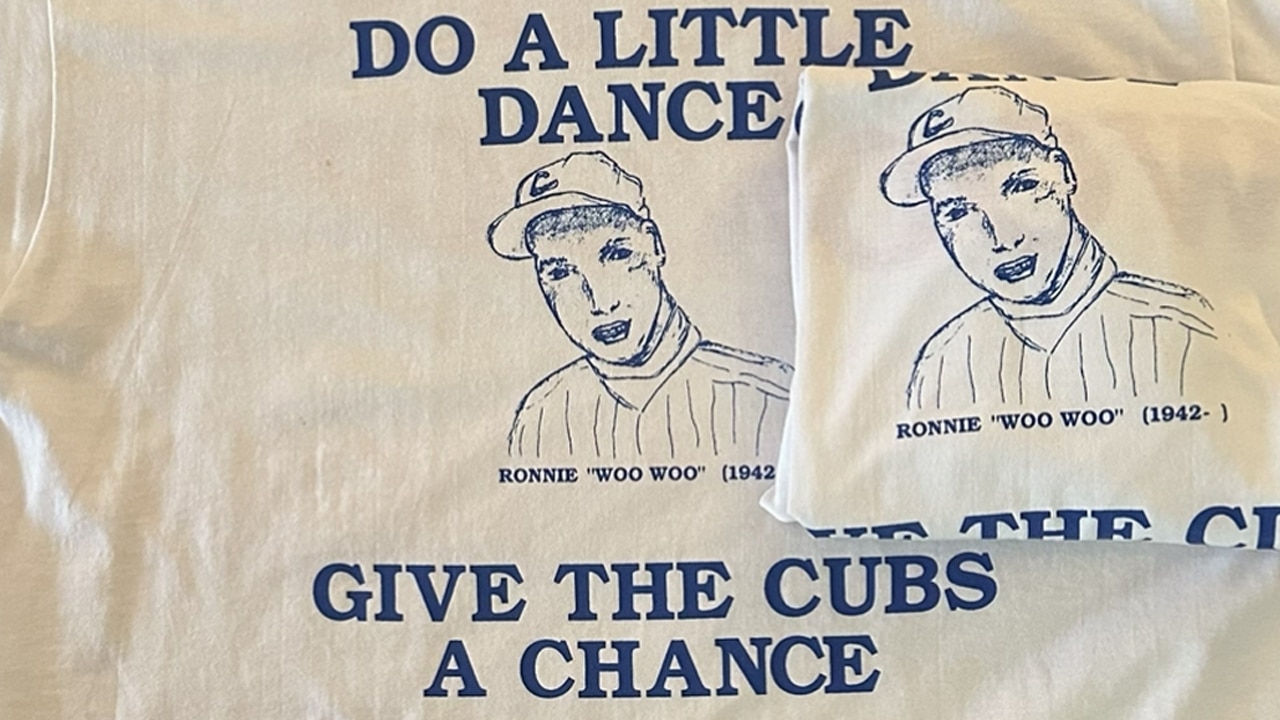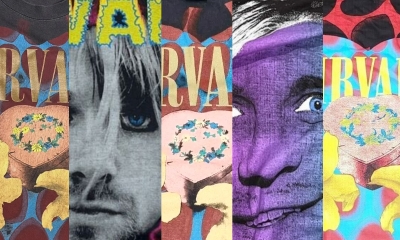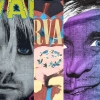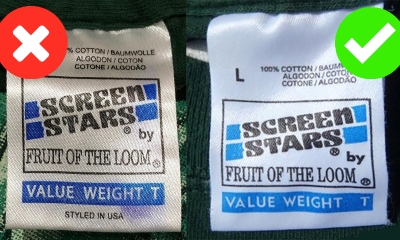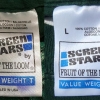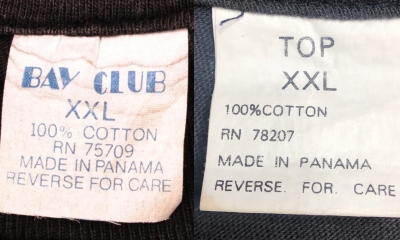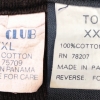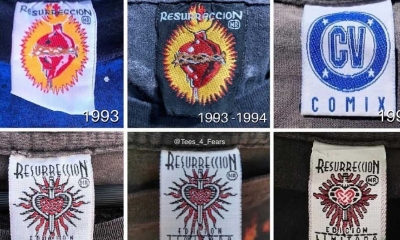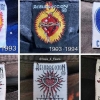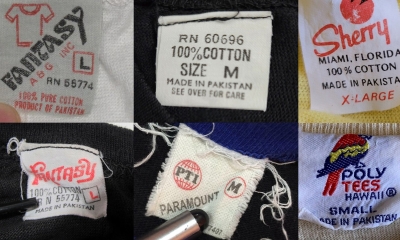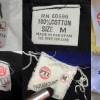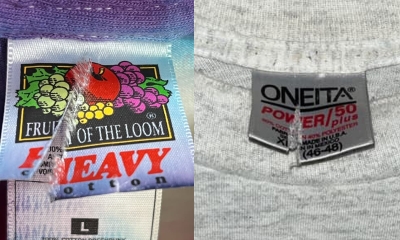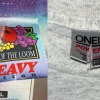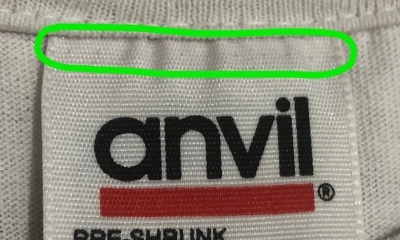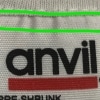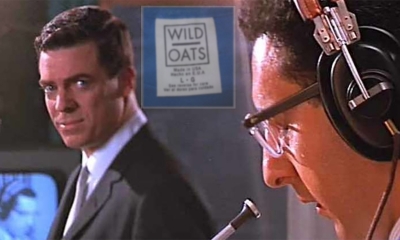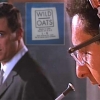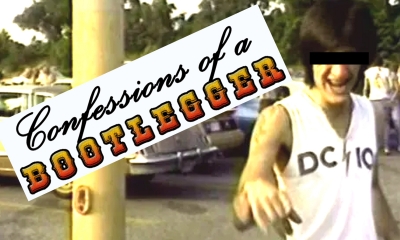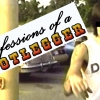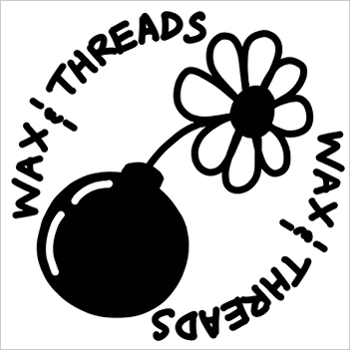Bootlegs
Swing and a Miss
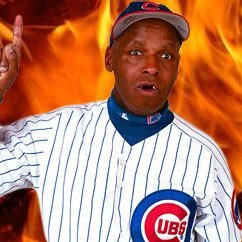
Living legend Ronnie “Woo Woo” Wickers
During the 2001 Major League Baseball season, I worked as an usher at Wrigley Field making $4.50 and hour which was the minimum wage back then. It took me more than an hour to get to the stadium on public transportation from my home in the suburbs. I’d listen to a Phish CD on a Discman with anti-skip technology while being bumped into by all the fans heading to the game.
The most appealing part of the job was that I’d get to watch my favorite team all season while being paid to do it. I quickly learned that duty was reserved for the septuagenarians hired in their golden years to direct patrons to their seats. During gameplay, they’d sit in a small camping chair at the top of the aisle and maintain order. At the same time, the younger and more able-bodied employees spent the game stationed at one of the many gates, tearing ticket stubs into the sixth inning or later before giving bathroom breaks to all the senior citizen workers at field level.
I was not a model employee. One game, I was sent home for not having the right color shoes on (navy blue instead of black); another time I dropped a 100-pound turnstile from the 1960s onto my foot and supremely fucked my toe up but failed to secure any workman’s compensation and instead hobbled into a toilet stall to enjoy a slice of Connie’s Pizza while taking my break. I’d pick out the autographed baseball cards that should be given away randomly to fans who enter the park early to keep for myself or give to my dad. I still have the Sammy Sosa bobblehead that I took from the first-ever bobblehead giveaway at Wrigley Field. I no show, no called my last game of the year. I was a shithead 17-year-old. Suffice it to say, I was not invited back for the 2002 season.
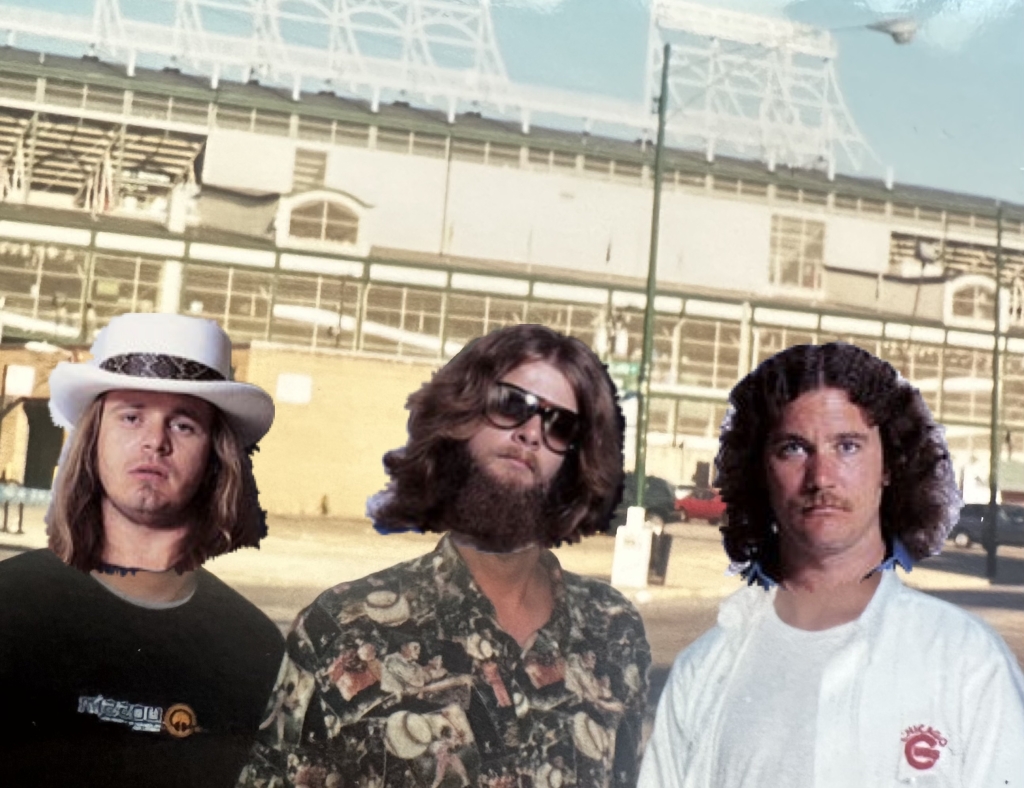
Brother, Dad and I after the Father’s Day game in 2001.
Occasionally I would be assigned to work in the bleachers where I was much more likely to be called upon to clean up vomit than in the grandstands. It was on one of my sojourns to that mythical land where I became familiar with the legend of Ronnie “Woo Woo” Wickers when he tried to walk into the stadium without a ticket while wearing a full Cubs uniform and I summarily denied his entry as is normal in a situation like that. He looked at me like I was crazy.
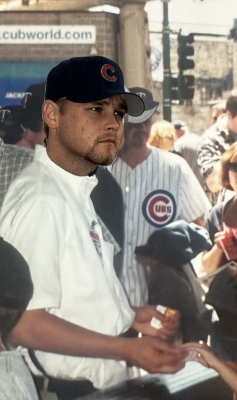
Working hard at the Friendly Confines of Wrigley Field (not the bleachers)
A supervisor came over and apologized for my error. How was I supposed to know that guy dressed as a player with a nameplate reading Woo Woo had cart blanche to waltz into the friendly confines like he helped the team win a World Series? A few days later amidst a twelve-game winning streak he was singing “Take Me Out the Ball Game” during the seventh inning stretch of a 79 pitch, one-hit shutout thrown by eventual 20 game winner Jon Lieber. An honor typically bestowed on only the most deserving celebrities, athletes, or media personalities coming through Chicago. Not a part-time janitor at Northwestern University.
Fast forward to senior year of high school in 2002 and I’d replaced the Phish albums with the 2-disc Lynyrd Skynyrd Gold compilation which I’d enjoy during the time set aside for the school newspaper to meet and work during second period of the day. But it was also in that classroom where inspiration struck. In the CD booklet for those rebel rockers a member of the band wore a t-shirt with the phrase “Do a little dance, give the kids a chance” emblazoned on the front.
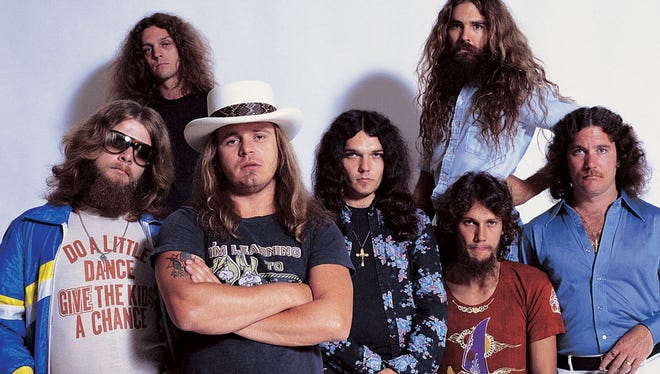
The inspiration for the Do a Little Dance, Give the Cubs a chance shirt, Lynryd Skynrd (Pronounced ‘Lĕh-‘nérd ‘Skin-‘nérd).
In that moment I was taken back to meeting that strange gentleman called Woo Woo and convinced myself that his unlicensed image would be ideal to convey the new and improved messaging “Do a little dance, give the CUBS a chance”. The idea was simple though not very thought out. I’d print shirts and sell them outside of Wrigley Field and create the next “Catholics vs. Convicts” shirt originated and made popular in 1988 during the Notre Dame/University of Miami college football rivalry.
Seeding the operation with money I’d made hosting keg parties for my fellow high schoolers in the forest preserves around where I lived was an opportunity to diversify my portfolio. For $35 I had one of the artists for the school newspaper illustrate the awkwardly sketched graphic with little resemblance to the man himself. The back hit’s signature catchphrase “Cubs Woo!” is an instantly recognizable battle cry near the ballpark aimed to beckon a call and response among the faithful.
To secure a printer, I went to the yellow pages, looked up, and then called phone numbers listed so I could receive quotes for the initial run of 50 shirts. I didn’t have a digital copy of the artwork, so I hand-delivered the original when making a deposit payment and finalized the design of the shirt. Out the door cost for everything was probably around $200. I planned to sell them for $20 each netting a cool $800 in profit.
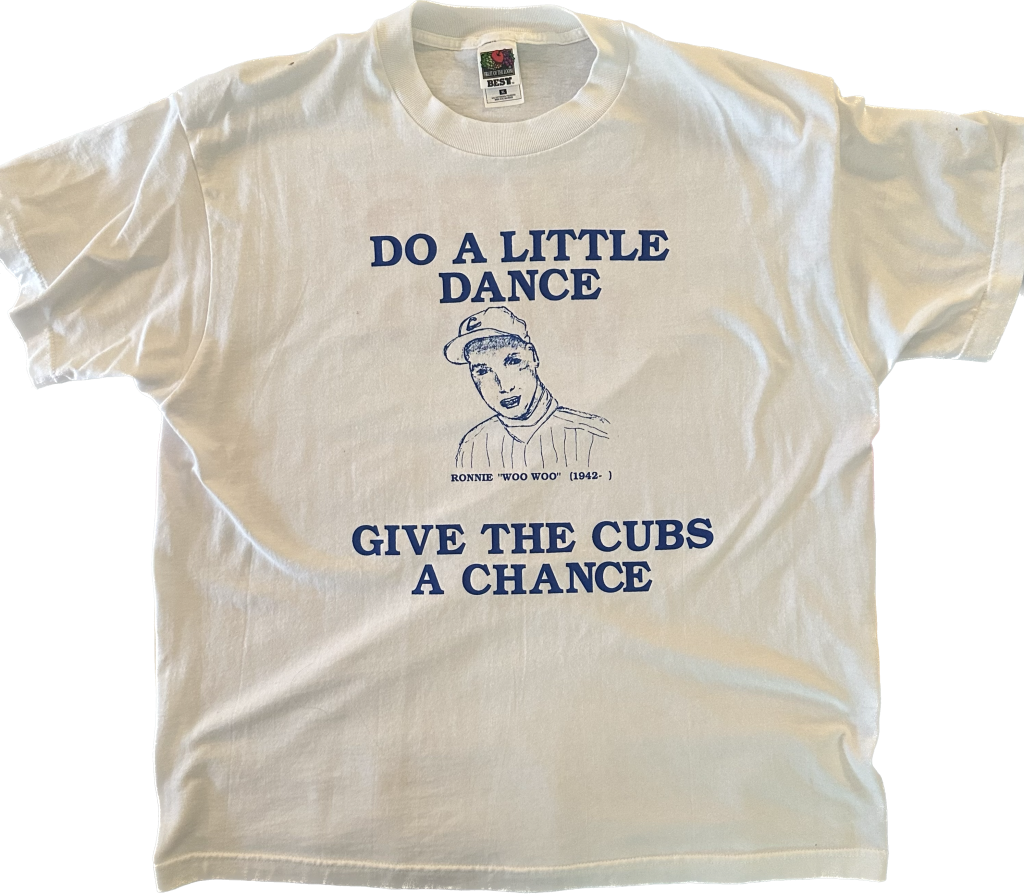
Front graphic of the classic Do a Little Dance, Give the Cubs a Chance t-shirt from 2002
Things don’t always go as planned. Early sales to friends and family were lower than expected. I hustled them around my high school before the next Cubs home stand figuring I’d be able to sell at least ten and break even before bringing this masterpiece to the masses. My skills and imagination as a salesperson were lacking. I took “No” for an answer and wasn’t assertive. My biggest problem was that I never really believed in the product. I knew it was inferior from a design perspective to any halfway decent shirt being sold around Wrigley Field.
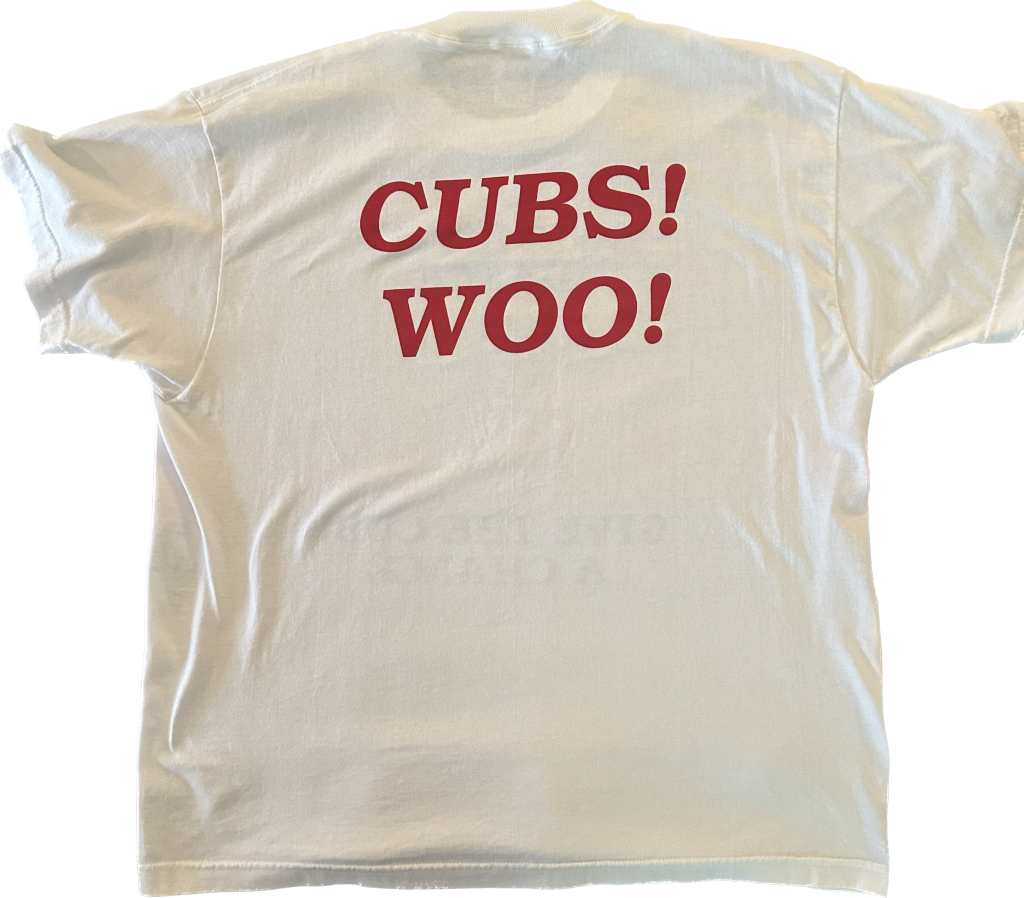
Back graphic of the classic Do a Little Dance, Give the Cubs a Chance t-shirt from 2002
Selling beer to my classmates at places in the woods with names like “Devil’s Hill” and “The Bridge” was damn sure easier and more lucrative than unloading the shirt would be. The risk there was that the cops could show up at any time to chase us away and cause the party to break. Sometimes, they’d grab some kids on underage drinking charges, but mostly, they just sent a bunch of drunk teens sprinting through the wilderness into the night.
There was no plan on how to go about selling the shirts outside the stadium. Certainly, no thought was given to obtaining a vendor’s license from the city to legitimize the endeavor. At the time there weren’t any semi-permanent outdoor souvenir stands like there are today. Aside from brick-and-mortar businesses selling authorized Cubs memorabilia, there would be a handful of entrepreneurs hustling hats, shirts, pennants, and other keepsakes to the crowds of fans as they entered and left the ballpark.
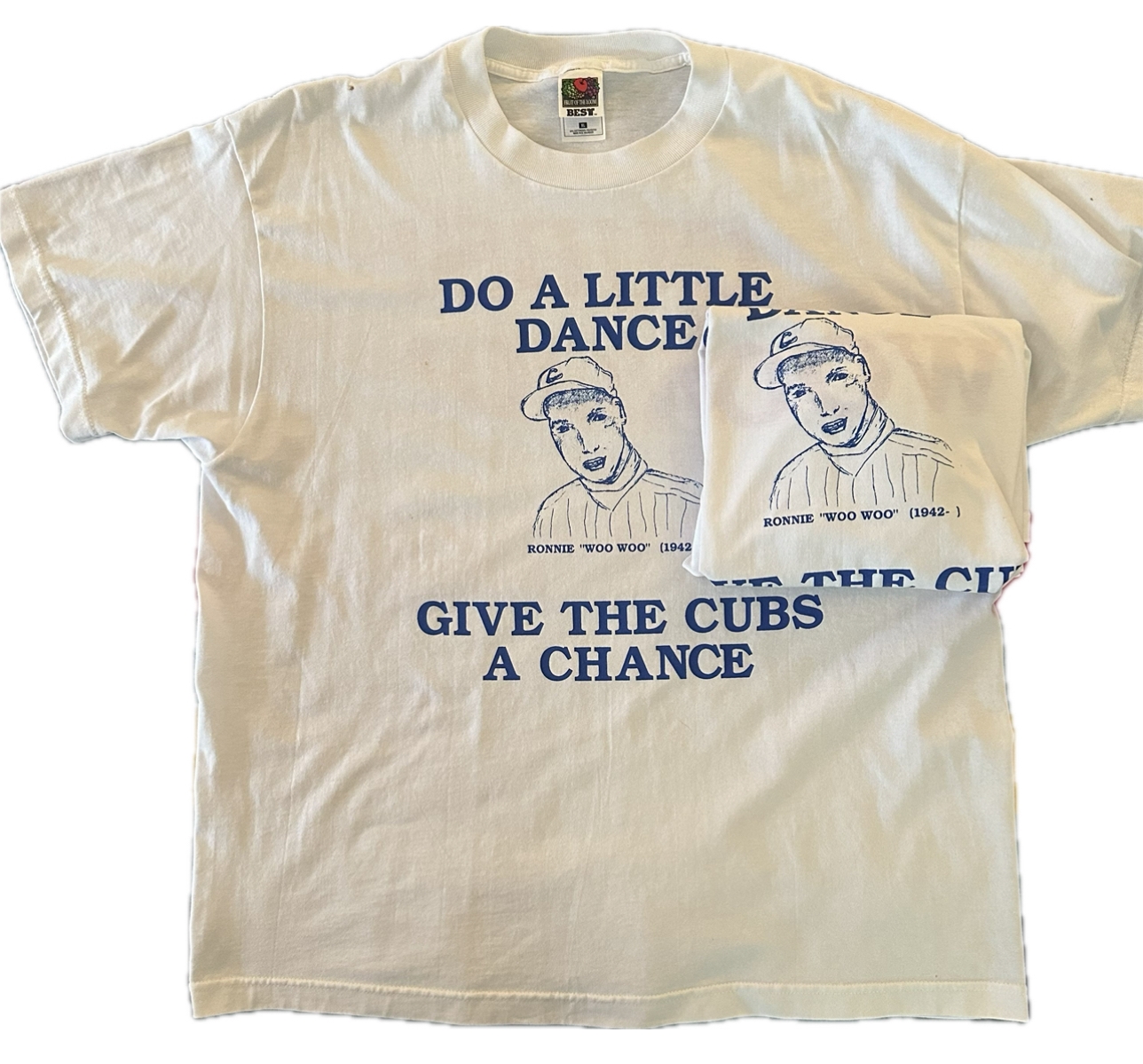
The only two Do a Little Dance, Give the Cubs a Chance shirts know in existence.
The most obvious thing to do was throw one of the shirts on, stuff a variety of sizes into a duffle bag, grab a wad of singles and fives from my cash reserves then trek to Wrigleyville and start making money. I considered all the things that could go wrong instead of the potential for a positive outcome. I thought about being run off by the Cubs crowd control (security guards), being sanctioned and detained by the cops for unlawful sales or losing my inventory to sabotage by one of the more seasoned and possibly legal vendors outside the stadium. Never mind the prospect of getting the shit kicked out of me by any of the aforementioned parties.
In the end I never attempted to sell the shirts outside of the ballpark. A mixture of foolish pride, fear of failure and performance anxiety ultimately kept me from the pursuit of bootleg shirt infamy. Instead, the shirts became the intramural basketball jerseys during the league champion run by my team the Log Jammers. Over the years, I would gift them to close friends and family for birthdays and holidays. At least two ended up as tokens of my affection for classmates which went unrequited.
Upon reflection, there are a few things I could have done differently starting with some quality control. First, I would have cut a deal with Mr. Wickers to include him any profits received from the sale of the shirt featuring his likeness. I didn’t suggest any revisions to the graphic and accepting it as is set me back from the start. I should have set my expectations lower and developed a strategy to enter the competitive business space of bootleg t-shirts rather than try to wing it. Instead of focusing on sales outside Wrigley Field, it would have been wise to push the product on the Red Line train heading to the games where there was a captive audience and no police presence.
To the best of my knowledge, the two shirts that I have, one extra-large and one double-extra-large are the only ones in existence They carry a few small stains from poor preservation but otherwise are in deadstock condition. It’s possible that somebody from my past could have held on to theirs and has no clue how rare the gem collecting dust in a storage unit among their letterman jacket and science fair ribbons is, but I wouldn’t bet on it.
Emmett H.W. Nelson is an enlightened rogue and writer based in Chicago, IL. His collection of personal essays, Wisdom and Defiance will be available soon.
- Emmett H.W Nelsonhttps://www.defunkd.com/author/emmett-nelson/
- Emmett H.W Nelsonhttps://www.defunkd.com/author/emmett-nelson/
- Emmett H.W Nelsonhttps://www.defunkd.com/author/emmett-nelson/
- Emmett H.W Nelsonhttps://www.defunkd.com/author/emmett-nelson/


